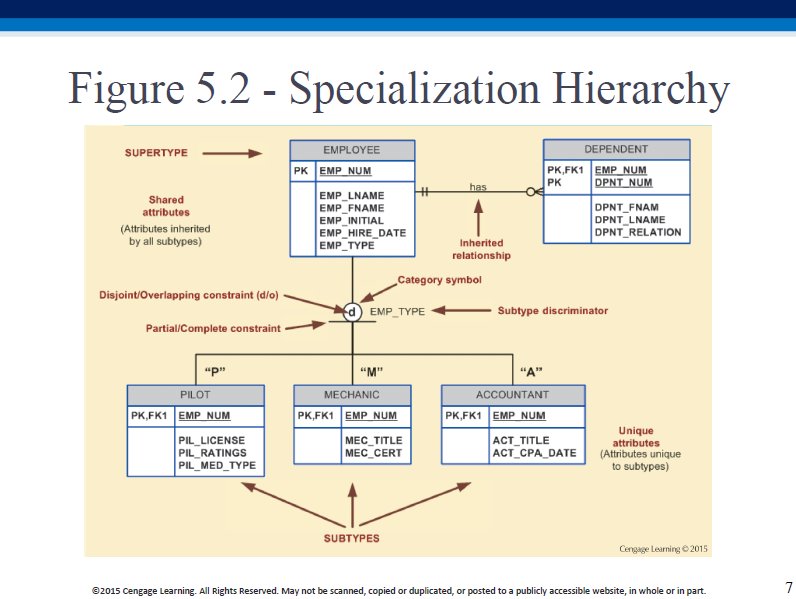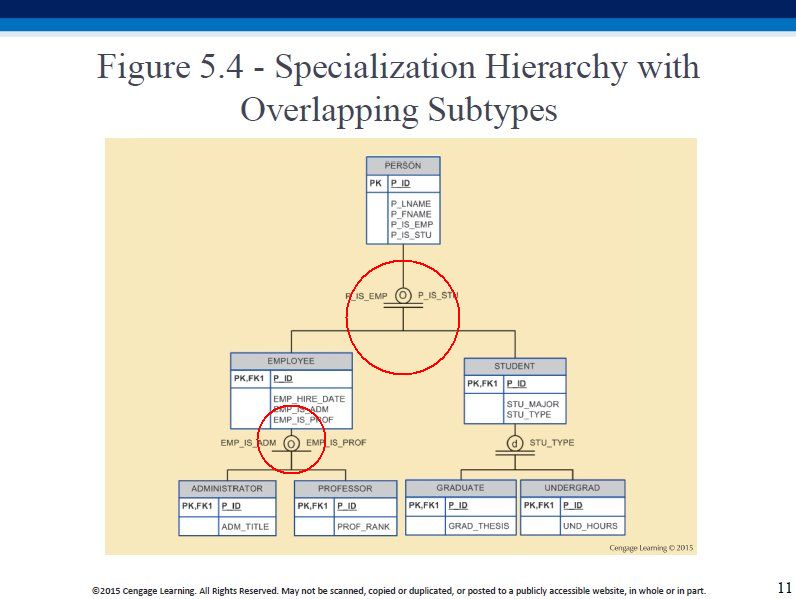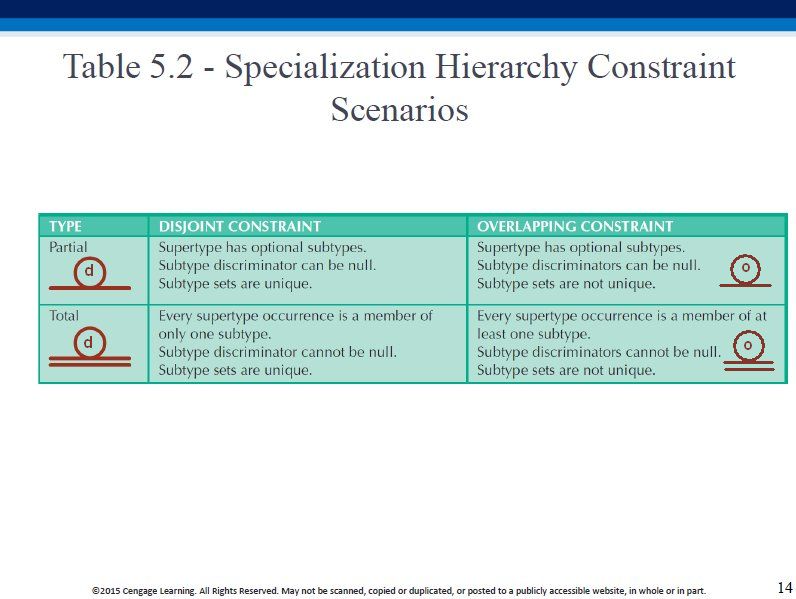[Notes] CSCI 585 DB Advanced Data Modeling
28 Jan 2020 | CSCI585, English/英文, NoteCredit to: Prof. Saty Raghavachary, CSCI 585, Spring 2020
outline
- Extended Entity Relationship (EER) model
Entity Supertypes and Subtypes
- Entity supertype: Generic entity type related to one or more entity subtypes
- Contains common characteristics
- Entity subtype: Contains unique characteristics of each entity subtype
- Criteria to determine the usage
- There must be different, identifiable kinds of the entity in the user’s environment
- The different kinds of instances should each have one or more attributes that are unique to that kind of instance
Specialization Hierarchy
- Depicts arrangement of higher-level entity supertypes and lower-level entity subtypes
- Relationships are described in terms of “is-a” relationships
- Subtype exists within the context of a supertype
- Every subtype has one supertype to which it is directly related
- Supertype can have many subtypes
- Provides the means to:
- Support attribute inheritance
- Define a special supertype attribute known as the subtype discriminator
- Define disjoint/overlapping constraints and complete/partial constraints

Inheritance
- Enables an entity subtype to inherit attributes and relationships of the supertype
- All entity subtypes inherit their primary key attribute from their supertype
- At the implementation level, supertype and its subtype(s) maintain a 1:1 relationship
- Entity subtypes inherit all relationships in which supertype entity participates
- Lower-level subtypes inherit all attributes and relationships from its upper-level supertypes
Subtype Discriminator
- Attribute in the supertype entity that determines to which entity subtype the supertype occurrence is related
- Default comparison condition is the equality comparison
Disjoint and Overlapping Constraints
- Disjoint subtypes: Contain a unique subset of the supertype entity set
- Known as nonoverlapping subtypes
- Implementation is based on the value of the subtype discriminator attribute in the supertype
- Overlapping subtypes: Contain nonunique subsets of the supertype entity set
- Implementation requires the use of one discriminator attribute for each subtype

Completeness Constraint
- Specifies whether each supertype occurrence must also be a member of at least one subtype
- Types
- Partial completeness: Not every supertype occurrence is a member of a subtype
- Total completeness: Every supertype occurrence must be a member of any

